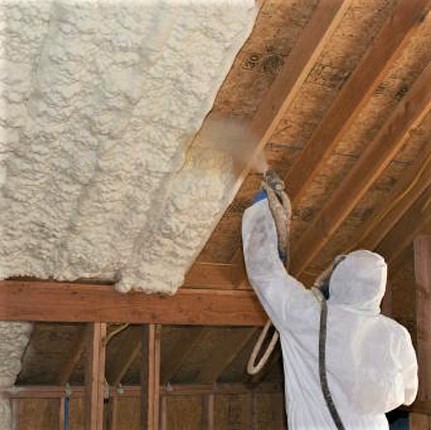Your Trusted Spray Foam Insulation Contractor In Georgia
Everyone wants a comfortable and energy-efficient home. But high energy bills, drafty rooms, and uneven temperatures can make that dream feel out of reach. No one should have to put up with that. It’s depressing and uncomfortable, especially for those who have respiratory problems.
At Georgia Insulation, we fully understand your concerns. For over eight years as a spray foam insulation contractor in Gainesville, GA & surrounding areas, we’ve improved thousands of houses. See more about our services!
Level Up Your Home Comfort With Our Specialized Services
Our specialty? Spray foam insulation services. We provide homeowners in Gainesville and nearby areas with superior energy efficiency and comfort. With our expertise and commitment, we work towards transforming your home into a cozy haven.
We apply a layer of spray foam insulation to seal gaps and cracks in your house’s walls, ceiling, and floors. You can use it in new construction or add it to existing homes for the best coverage and insulation.

Why Choose Spray Foam Insulation?
Deciding which type of insulation is best for your home can be difficult. But with spray foam insulation, you can’t go wrong. Here’s why:
- Superior temperature control
- Increased energy efficiency
- Noise reduction
- Improved indoor air quality
- Increased home’s structural integrity
It also acts as a barrier against allergens and pollutants, creating a healthier indoor environment for you and your family.
Comprehensive Insulation Tailored For You
We don’t just offer a one-size-fits-all solution. Our spray foam insulation services include:
- Initial assessments to understand your home’s needs.
- Customized insulation plans.
- Meticulous installations.
Our certified team will provide you with the best service possible. We use only the highest quality products, ensuring long-lasting results and maximum energy savings for your home.
Lets Get Started
Contact us for a free consultation
Receive a tailored insulation plan based on your home's needs
Get your spray foam insulation installed by our experts
Take The Next Step Toward A Cozier Home With Georgia Insulation

Get rid of the high energy costs and discomfort of an under-insulated home. With Georgia Insulation, you’ll enjoy a more comfortable, energy-efficient home and lower utility bills.
Get Your FREE Consultation Today!
Just fill out your information and a member of our team will get started with you right away.




